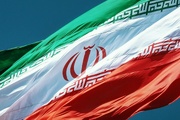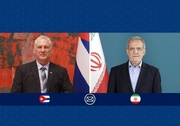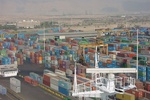Since its launch in 1967, ASEAN has indeed come a long way in accelerating economic growth, promoting durable peace, and nurturing a common vision in the sub region. The rate of poverty has been reduced from 40 per cent in 1990 to just 8 per cent in 2012 (compared to regional average of 15 per cent), GDP per capita has been raised to almost $4,000 over the past decade, and with a combined GDP of $2.5 trillion ASEAN is now the seventh largest economy in the world and the third in Asia-Pacific.
As the Association celebrates its 50th anniversary this year, the United Nations Economic and Social Commission for Asia and the Pacific (ESCAP) has been a strategic partner of ASEAN during its journey. Over this period both these intergovernmental and regional cooperation platforms have built a strategic partnership which has seen the development of productive symbiosis ultimately benefiting member countries. As ASEAN gains from the multi-sectoral policy advice and capacity programmes facilitated by ESCAP for the more vulnerable of countries within the sub region, the Regional Commission is able to draw from development lessons of ASEAN as the most successful cooperative arrangement in the region.
There are certainly promising prospects for this largest regional bloc of Asia given its determination to foster the ASEAN Economic Community (AEC) by 2025, the benefits of which will be far reaching for the sub region with positive spillovers for the rest of Asia. Continued strengthening of policy and incentive frameworks, innovation and improvements in productivity is set to double the size of ASEAN economies to $4.6 trillion by 2050 as the region will continue to be attractive destination for global investment flows, which already reached over $120 billion by 2015. Further reduction in trade costs through the elimination of tariffs, implementation of trade facilitation measures, and progress on the liberalization of services and investment will deepen trade links within the sub region as well as with the wider global economy. Emerging as a consumer hub, almost 125 million household will witness the doubling of their annual income by 2025.
Despite ASEAN’s progress and its impressive economic potential, considerable work still remains to narrow development gaps across countries. The partnership between ASEAN and ESCAP promotes complementarity between the 2030 Sustainable Development Agenda and AEC, which should over the next decade contribute to narrowing national as well as intra-regional disparities, creating balanced urban growth, and mitigating climate change as well as adapting to its effects. Implementation of urban sustainable goals will be crucial as an additional 25 million people will move to cities by 2025. Building urban resilience will be critical as nearly 40 per cent of ASEAN’s GDP growth will come from 142 cities hosting populations between 200,000 and 5 million people. Creating balanced and inclusive urban growth will require trillions of dollars in investment and effective financial management to provide public services and close gaps in public transportation, ICT infrastructure, housing, and urban environmental management.
The importance of balancing Southeast Asia’s environmental and development needs has also never been more evident. Greenhouse gas emissions grew more rapidly in Southeast Asia than in any other region of the world, increasing by 227% over the past two decades. The impacts of climate change could see ASEAN’s GDP falter by as much as 11 per cent if mitigation measures are not undertaken to curb emissions as part of global efforts. Reducing land use emissions and deforestation while improving energy efficiency and expanding the use of renewables or other low-carbon energy sources are some of the steps to put these countries on a low carbon growth pathway.
Regional cooperation facilitated by the intergovernmental platforms of ASEAN and ESCAP will be also critical to tackling these immense challenges. For instance, this partnership has helped safeguard and improve the livelihoods of many peoples in Southeast Asia. In the area of disaster response, when Cyclone Nargis struck the Ayeyarwady Delta of Myanmar in May 2008, ESCAP and ASEAN together facilitated the flow of humanitarian assistance. In the post-disaster recovery phase, ESCAP and ASEAN jointly organized the Post-Nargis Regional Partnership Conference where over $103 million were raised to support recovery plans. This partnership was further advanced in 2011 with ESCAP’s support for the establishment of the ASEAN Coordinating Centre for Humanitarian Assistance on Disaster Management.
The rich history between our institutions has set the stage for the next phase of progressive collaboration, guided by the AEC 2025 and the 2030 Agenda for Sustainable Development. As we work towards achieving both these agendas, coordinated action is needed to address transboundary challenges and unlock the possibilities of regional cooperation. These include deepening regional integration; facilitating trade; greater financial integration and widening access to finance; realizing the ASEAN Power Grid, connecting missing transport links; and bridging the digital divide. Our collective efforts, delivered through a coordinated approach under the ASEAN-UN Plan of Action, will provide South-East Asia with the strong foundation it needs to prosper in the face a changing world and improve the lives of its citizens.
ESCAP recognizes that we live in an interconnected region and as such, a prosperous ASEAN benefits the wider Asia-Pacific region. We congratulate ASEAN on achieving 50 years of productive subregional cooperation and promotion of peace and security. With the establishment of the forward-looking ASEAN Vision 2025 and the ambitious objectives of the 2030 Agenda, the future of collaboration between ESCAP and ASEAN to improve the future of all the people in ASEAN looks better than ever before.
Dr. Shamshad Akhtar is an Under-Secretary-General of the United Nations (UN) and the Executive Secretary of the Economic and Social Commission for Asia and the Pacific (ESCAP).
























Your Comment